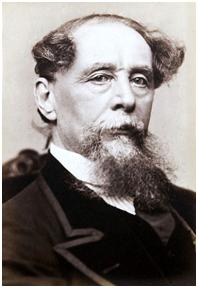Widgetized Section
Go to Admin » Appearance » Widgets » and move Gabfire Widget: Social into that MastheadOverlay zone
Charles Dickens and the Use of Data
The views expressed are those of the author and do not necessarily reflect the views of ASPA as an organization.
By Amy Johnson
September 11, 2015

Daguerreotype by Jeremiah Gurney courtesy of Wikimedia Commons
In A Tale of Two Cities, Charles Dickens writes, “It was the best of times, it was the worst of times, it was the age of wisdom, it was the age of foolishness…” Of course, he’s describing the late 18th century. But can his words also be used to characterize what it is like to be a public sector manager today given the hyper focus on data driven decision making?
The Best of Times
Never before have we had such access to data. An increased emphasis on creating transparency in government combined with rapid advances in technology has resulted in massive amounts of open data. For example, on the website for the U.S. Department of Education’s National Center for Education Statistics, one can find data sets associated with national assessments, characteristics of elementary and secondary education by state, public libraries and the rate of violent incidents in public schools. This is just a small selection of available data.
State and local governments use open government portals to share data with the public. Nonprofit organizations generate data through studies, which are posted online for broad distribution or can be obtained for a nominal fee. Just the other day, I purchased several decades worth of data on giving. The data sets I was interested in were delivered to my email inbox within minutes of my discovering them.
In many cases, open data sites contain links to analytic tools to facilitate use of the data. In addition, analytic software allows for quick and painless manipulation, comparison and visualization of data sets. Those of us who came of age in a world before “point and click” remember having to write code in order to leverage the power of statistical programs. You would miss one parenthesis or mistakenly use a comma instead of a period in a string of commands in a hundred lines of code and then spend hours trying to find the error that produced the “failure to execute” notification. You had less time to focus on identifying interesting relationships and patterns in the data that statistical analysis would reveal once you got the program to run. No more!
Researchers, but also the public, have an unprecedented ability to retrieve, combine and analyze data sets. Researchers are better able to answer previously unanswerable questions. They are no longer limited in their ability to test hypotheses by a simple lack of data. The public can contribute as a partner with government by using public data to create solutions for lower priority, but still important, problems that affect quality of life. A number of cities including Baltimore, New York and Chicago have held competitions to inspire the public to use open data to create mobile applications to address quality of life issues in their communities.
The Worst of Times
Mostly, the dynamic created by the availability of vast amounts of data and easy to use tools to support analysis of it is good. However, this does present public sector managers with challenges.
First, there is an increased emphasis on use of data and evidence for decision-making and a related expectation that managers have the knowledge and skills to do that. Managers still need to be supported as they learn what is important to ask of the data and which data to focus on based on what it really measures. They need to be able to put that data into the right context to understand what it means about performance. Otherwise, they won’t be able to identify the right activities to address inconsistencies and improve outcomes.
For some managers, the ability to identify key takeaways from data is innate. For many, however, interpreting data and data-based reporting is like reading in a foreign language. Managers need access to tools but also training to build skills to meet these new expectations.
In addition, just because data is available that doesn’t mean that it is of good quality or even important. Not every problem identified because of increased access to data and tools must be addressed. A practice of annual strategic planning and development of a performance management framework with regularly scheduled reviews throughout the year helps managers stay focused on priorities. Plans can change, but only when the issues that are raised meet a certain threshold based on the perceived magnitude and severity of the issue and confidence in data quality.
We must enable our public sector managers to take advantage of this age of data so these can be “the best of times.”
Author: Amy Johnson has almost two decades of experience working with public and private sector clients in the areas of program and process evaluation, strategic planning and organizational performance management. She serves as the director for nonprofit and civilian government programs at Coverent, a consulting firm focused on helping clients to use data analytics to measure program performance and maximize mission impact. Contact at [email protected].



Follow Us!